Ever wondered how those fancy cocktail bars always have a perfectly dried lime slice on hand for their signature drinks? The secret lies in the art of dehydration.
Not only is it a fun and easy process, but it also allows you to have fresh-tasting citrus all year round, even in the off-seasons.
In this blog post, we'll walk you through the steps on how to dehydrate lime slices at home and show you the many ways you can to use food dehydrator recipes in your everyday life.

The Appeal of Dehydrated Limes
Preserving limes and other citrus fruits like orange slices or star fruit by dehydration serves several purposes.
It extends their shelf life, reduces the space they occupy, and offers a unique way to enjoy their vibrant flavors. Dehydrated limes retain their tangy taste, making them perfect for cooking, baking, and beverage-making. They're also great for garnishing or as part of a homemade gift.
What You'll Need
Dehydrating limes doesn't require any fancy equipment; all you need is a good oven or a food dehydrator, a sharp knife, a chopping board, and some fresh limes.
If you're using an oven, make sure it can be set to a low enough temperature (around 130-140°F).
If not, consider investing in a food dehydrator, as they're specifically designed for this purpose and provide more consistent results. You can also use a dehydrator for other fruits and vegetables, making it a versatile kitchen tool.
Recipe Prep
- Wash and Dry the Limes: Start by washing your limes thoroughly, making sure to remove any dirt or debris. Then, dry them with a clean towel.
Ingredients & Equipment
Below is a quick look at the ingredients and directions. You can find the entire ingredient amounts and step by step directions in the recipe card below. P. S. You can also save your favorite recipes to your personal recipe box! ⬇️
👇See the step by step directions below!
- Fresh unblemished limes: These will yield the best flavor and texture after dehydration. Overripe or underripe limes may result in a less desirable taste and texture.
- Water: This is necessary to wash the limes thoroughly before slicing and dehydrating them to ensure they are clean and free from any residues.
- Lint-free towels: These are used to pat the limes dry after washing them. It's important that the limes are dry before slicing to make the process easier and safer.
- A sharp knife or a mandolin: These tools are used to slice the limes. A sharp knife will make the task easier and safer, while a mandolin offers the advantage of creating uniform slices, which is essential for even dehydration.
- A cutting board or cutting mat: This provides a safe and stable surface for slicing the limes.
- A food dehydrator, kitchen oven, or an air fryer: These appliances are used to dry out the lime slices over a period of time, essentially removing their water content and preserving them.
- Containers for storage: Once your limes are dehydrated, they should be stored in airtight containers and kept in a cool, dry place. This will maintain their flavor and extend their shelf life.
Step by Step Directions
Step 1: Slice the Limes: Use a sharp knife to make thin slices of the limes. You can choose to leave the peel on or remove it, depending on your preference.
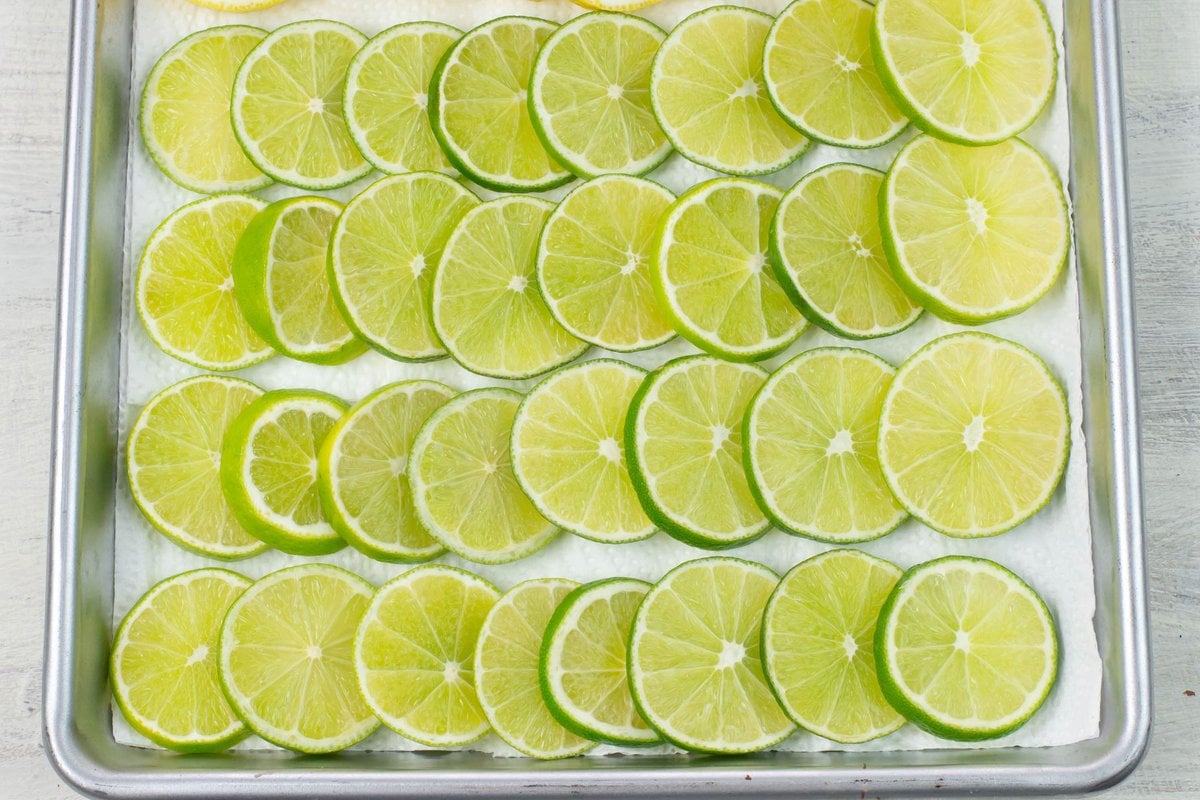
Step 2: Arrange the Slices: Lay the lime slices on a baking sheet or dehydrator tray, making sure they are not touching each other.

Step 3: Dehydrate: Place the baking sheet or dehydrator tray in the preheated oven or food dehydrator. The time it takes to dehydrate the limes will vary depending on your equipment and the size of the slices, but it typically takes around 8-12 hours. Check on them periodically and rotate the tray if needed for even drying.
Step 4: Test for Dryness: To check if the limes are fully dehydrated, take one slice out and let it cool. If it feels dry and crispy, then they are ready to be removed from the oven or dehydrator.
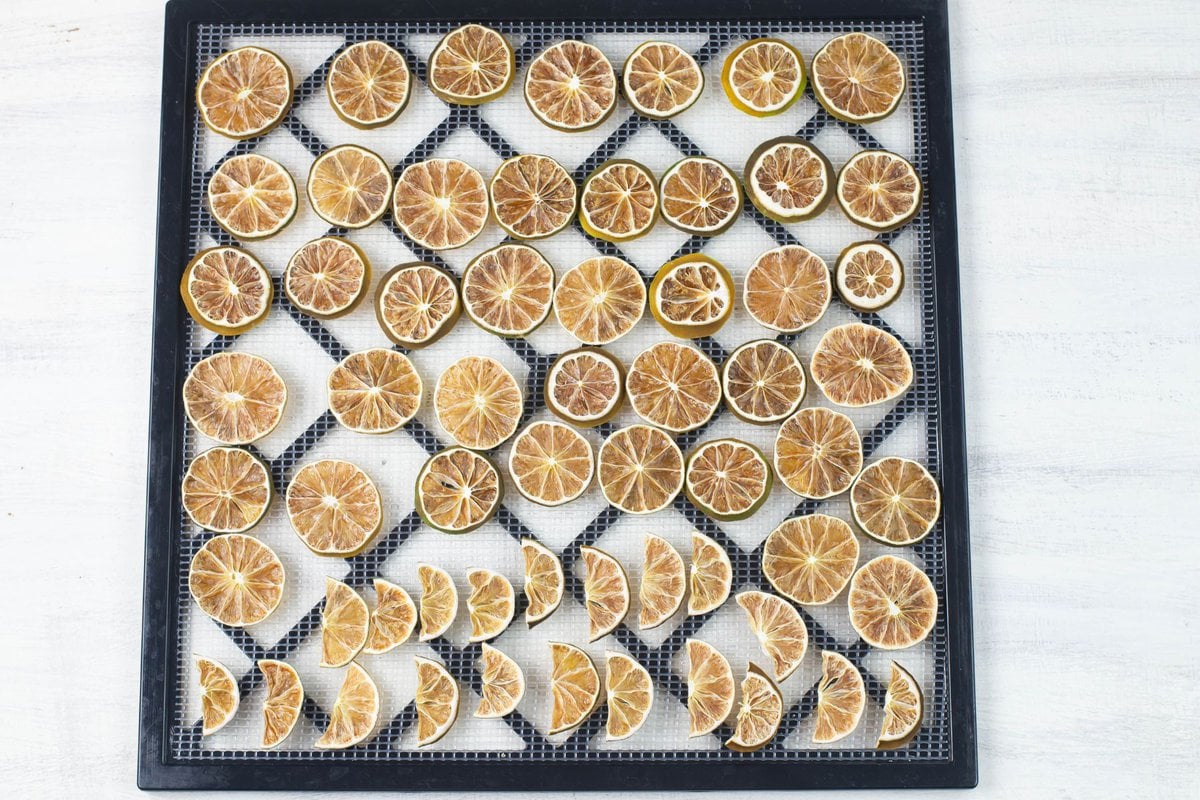
Step 5: Store: Once fully dehydrated, let the limes cool completely before storing them in an airtight container. They can last for several months if stored properly.
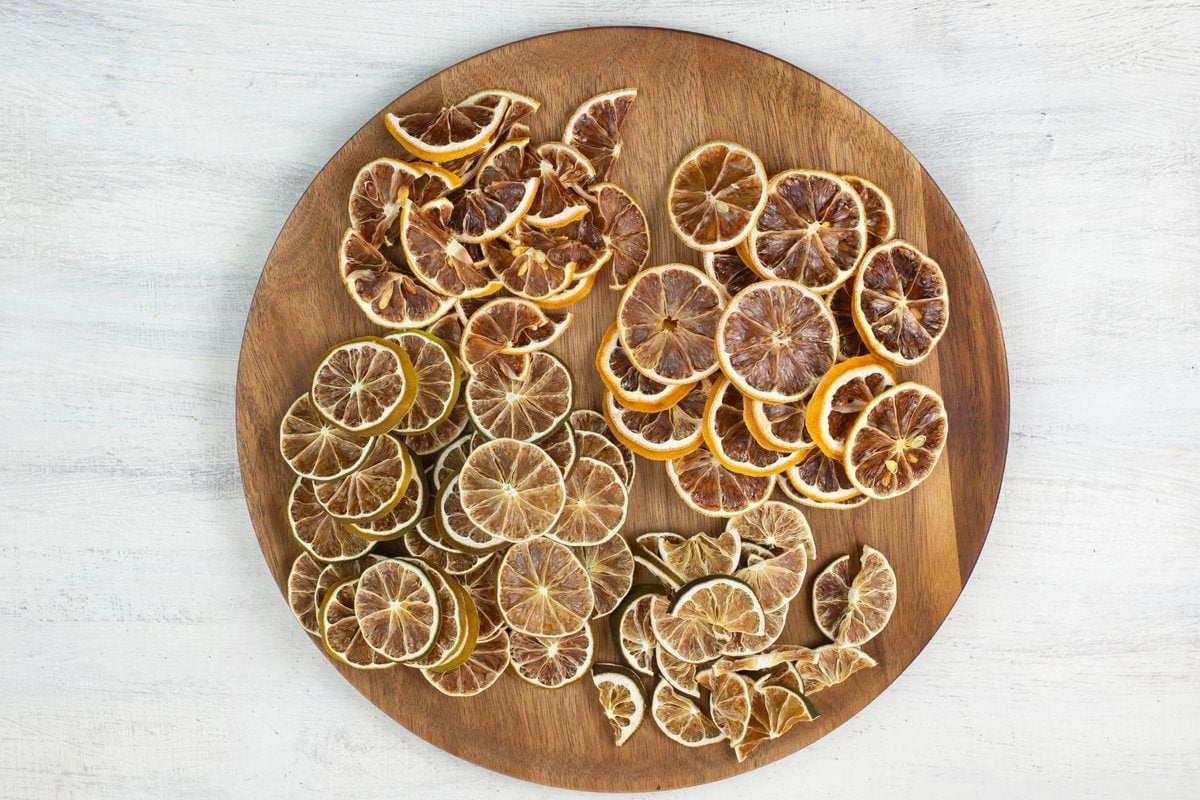
Step 6: Enjoy Your Dehydrated Limes: You can use your dehydrated limes in a variety of ways, such as adding them to drinks for a hint of lime flavor or using them as a garnish for dishes.
Get creative and experiment with different ways to use dried limes!
Storing Your Dehydrated Limes
Proper storage is crucial for maintaining the quality of your dehydrated limes or citrus fruit. Keep them in an airtight container in a cool, dark place.
If stored correctly, they should last for up to a year. However, it's best to use them within six months for the most flavor.
There are several effective methods for storing dehydrated lime slices:
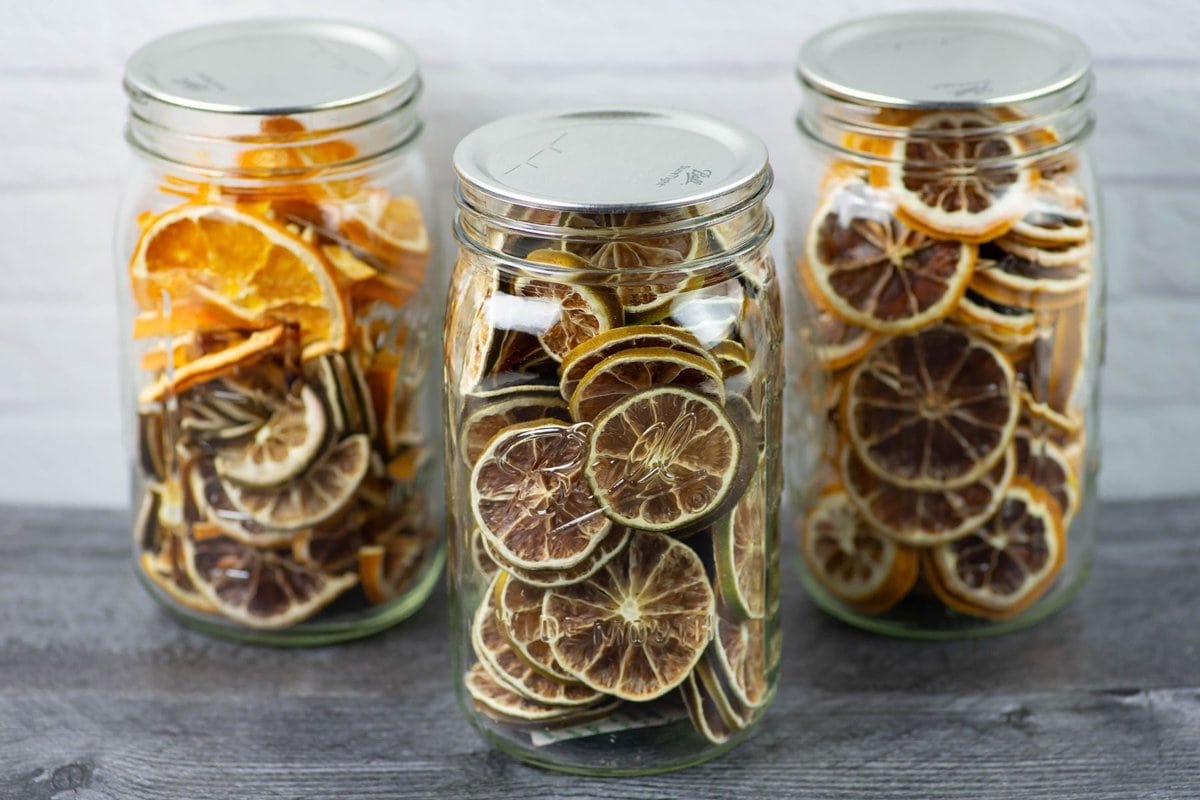
- Glass Mason Jars: These jars are a popular choice for storing dehydrated food, as they are sturdy, reusable, and able to be vacuum sealed. Vacuum sealing removes air from the jar, reducing the amount of oxygen which can cause food to spoil. This method can dramatically increase the shelf life of the dehydrated limes.
- Airtight plastic food storage containers: These are excellent for short-term storage, as the airtight seal keeps the limes dry and prevents exposure to air. However, for long-term storage, they may not be as effective as other methods like vacuum sealing.
- Mylar Bags: These bags are made from a material that provides an excellent oxygen barrier, protecting the dehydrated limes from air, light, and moisture - all things that can degrade food over time. Mylar bags, when used with oxygen absorbers, are a great long-term storage solution.
- Vacuum Seal Bags: Vacuum sealing is another effective way to store dehydrated limes for the long term. The bags are sealed air-tight, which prevents oxidation and extends the shelf life of the food.
- Zip Lock Bags: While these bags are convenient, they are not recommended for long-term storage of dehydrated food. Air can still slowly seep into zip lock bags, which can lead to spoilage over time. These are fine for short-term storage or for transport.
The Many Uses of Dried Lime Slices
Dehydrated limes have a multitude of culinary uses. From using them as dried slices or wedges to grinding them into a powder as an ingredient.
- Cooking: Dehydrated limes can be ground into a powder and used as a spice in various dishes, offering a tangy punch that is both refreshing and intense. They work great in marinades, soups, salads, dressings, and sauces, and can also be used in baking for a citrusy twist.
- Desserts: The tangy yet slightly sweet flavor of dehydrated limes can be a delightful addition to desserts. Use them in cakes, pies, or cookies to add a unique flavor profile that complements the sweetness.
- Soups and Stews: Adding a dehydrated lime to soups and stews infuses the dish with a subtle citrus essence, enhancing the overall flavor. The lime rehydrates as it simmers, releasing its flavors gradually.
- Rice and Grain Dishes: Dehydrated limes can be added to cooking rice or grains, imbuing them with a delicious citrus undertone.
- Garnish: Crushed dehydrated lime can serve as an attractive and flavorful garnish, adding a pop of color and taste to both savory and sweet dishes.
Dehydrated lime slices serve as a unique and flavorful addition to a variety of drinks and cocktails.
- Cocktails: Dehydrated lime adds a layer of complexity to cocktails, giving them a tangy yet slightly sweet flavor. They work particularly well in tropical and citrus-based cocktails like Margaritas, Mojitos, and Gimlets. Simply place a slice in your glass or muddle it into your drink for intense flavor.
- Non-alcoholic Beverages: Dehydrated limes can be used to infuse water, iced tea, or lemonade, providing a refreshing, citrusy taste. Drop a slice into your beverage and let it rehydrate and release its flavors.
- Hot Drinks: Adding a slice of dehydrated lime to hot tea can give it an invigorating twist. The heat will rehydrate the lime quickly, infusing the tea with its flavor.
- Drink Garnish: Beyond flavor, dehydrated lime slices make visually appealing garnishes, giving any drink a professional, sophisticated look. Plus, they're easier to handle and last longer than fresh limes.
It's important to note that dehydrated limes intensify in flavor as they rehydrate, so a little can go a long way. Experiment with quantities to find the balance that suits your taste.
They're also great for DIY crafts or homemade potpourri. Get creative and experiment with different ways to use your dehydrated limes!
Recipe FAQS
Any type of food dehydrator can be used to dehydrate lime slices. I have used a range of dehydrator and have found the Excalibur dehydrator to be the best.
Limes are very easy to prepare for dehydrating. All you need to do is to wash the citrus fruit and slice it into ¼ inch thick slices.
It usually takes 8 to 12 hours to dry sliced limes. The thickness of the slices is what will determine how much time it will take to properly dry them.
📌Dehydrating Tips
- Ensure your limes are fresh and ripe for optimal flavor. Overripe or underripe limes may result in less desirable taste and texture after dehydration.
- Slice your limes consistently. This will ensure that they dehydrate evenly and at the same rate. A mandolin slicer can assist in achieving uniform slices.
- Spread the lime slices in a single layer on your dehydrator trays. Overlapping can lead to uneven dehydration.
- Keep your dehydrator at a consistent temperature. Most fruits, including limes, are best dehydrated at temperatures between 135 and 140 degrees Fahrenheit.
- Store dehydrated lime slices in a cool, dry place in airtight containers. This will maintain their flavor and extend their shelf life.

Dehydrating limes at home is a simple and rewarding process. It allows you to enjoy the fresh taste of limes whenever you want and provides a versatile ingredient for your kitchen or bar.
Next time you have extra limes on hand, consider dehydrating them instead of letting them go to waste. With a little bit of time and effort, you can transform these citrus fruits into a delicious and versatile ingredient that will enhance the flavor of your dishes and drinks.
Plus, knowing how to dehydrate limes is a handy skill to have, especially during out-of-season months when fresh limes might not be readily available.
With the added benefit of a longer shelf life, dehydrated limes are a must-have for any home cook or bartender.
So why not give it a try? You might just find that these dried citrus gems become a staple in your culinary adventures. Happy dehydrating!
More Dehydrating Recipes
More dehydrated fruits you might like to try.
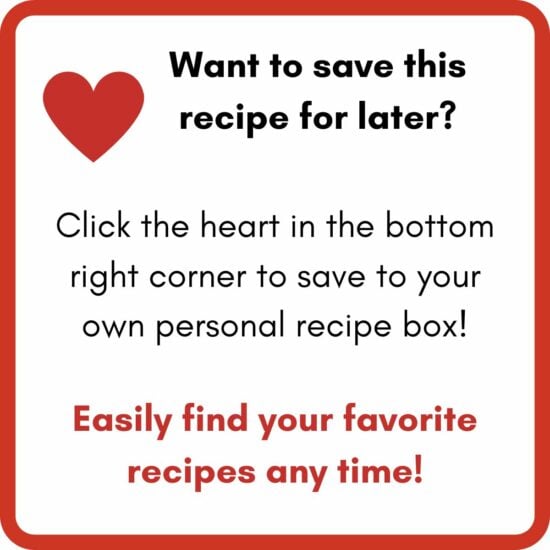
⭐Leave a Star Rating
Have you tried the recipe? Leave a star rating in the recipe card below to let me know how the recipe turn out.
Email questions or recipe requests to flouronmyface@gmail.com. Follow me on Pinterest, YouTube, Instagram and Facebook.

How To Dehydrate Lime Slices
Equipment
- sharp knife
- cutting board
- containers for storage
Ingredients
- 4 lbs. Fresh unblemished limes
- 6 cups Water
Instructions
Prep
- Start by washing your limes thoroughly, making sure to remove any dirt or debris. Then, dry them with a clean towel.
Drying the lime slices
- Use a sharp knife to make thin slices of the limes. You can choose to leave the peel on or remove it, depending on your preference.
- Lay the lime slices on a baking sheet or dehydrator tray, making sure they are not touching each other.
- Place the baking sheet or dehydrator tray in the preheated oven or food dehydrator. The time it takes to dehydrate the limes will vary depending on your equipment and the size of the slices, but it typically takes around 8-12 hours. Check on them periodically and rotate the tray if needed for even drying.
- To check if the limes are fully dehydrated, take one slice out and let it cool. If it feels dry and crispy, then they are ready to be removed from the oven or dehydrator.
- Once fully dehydrated, let the limes cool completely before storing them in an airtight container. They can last for several months if stored properly.
- Enjoy Your Dehydrated Limes: You can use your dehydrated limes in a variety of ways, such as adding them to drinks for a hint of lime flavor or using them as a garnish for dishes.
Recipe Expert Tips
- Ensure your limes are fresh and ripe for optimal flavor. Overripe or underripe limes may result in less desirable taste and texture after dehydration.
- Slice your limes consistently. This will ensure that they dehydrate evenly and at the same rate. A mandolin slicer can assist in achieving uniform slices.
- Spread the lime slices in a single layer on your dehydrator trays. Overlapping can lead to uneven dehydration.
- Keep your dehydrator at a consistent temperature. Most fruits, including limes, are best dehydrated at temperatures between 135 and 140 degrees Fahrenheit.
- Store dehydrated lime slices in a cool, dry place in airtight containers. This will maintain their flavor and extend their shelf life.






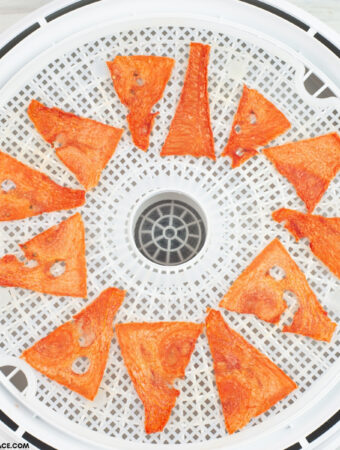
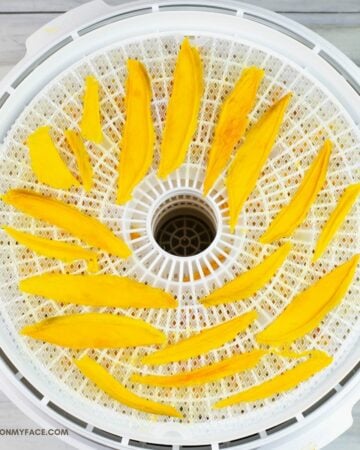
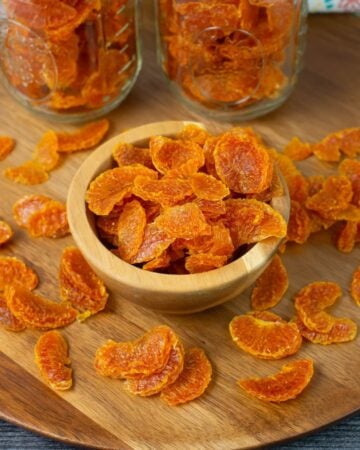



Leave a Reply